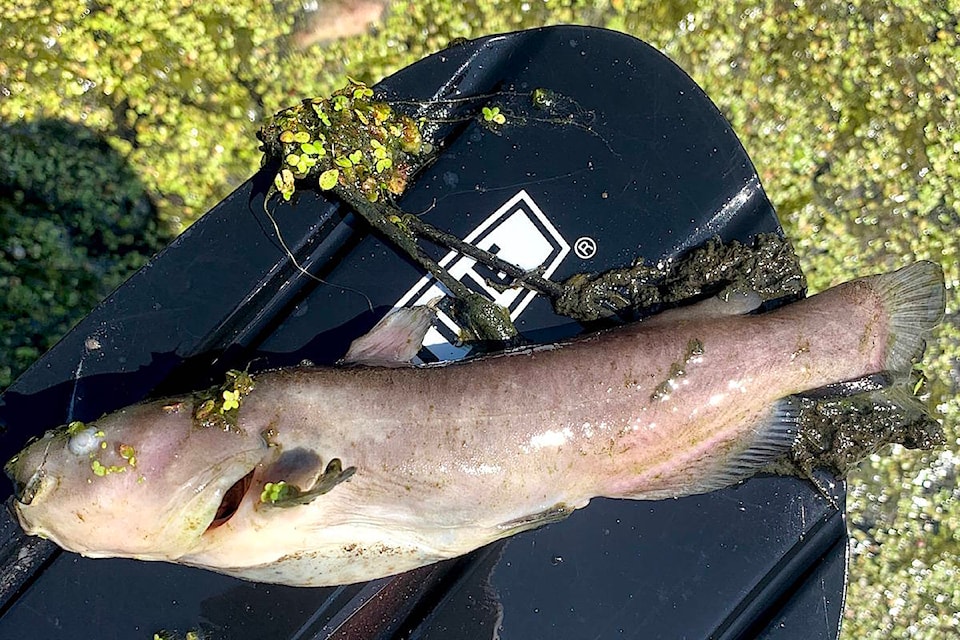A Fairfield Island family whose property backs onto the Bell Slough was alarmed to find more than 100 dead fish in the weed-choked waterway.
“My husband was out blackberry picking and saw one dead fish,” recounted resident Alicia Edwards. “Then he saw about 100 fish.”
Residents living near the slough reported the sudden fish die-off to City of Chilliwack, and city staff attended the site last week to identify species involved and take water quality readings.
“Due to the early extreme temperatures and continued hot and dry weather, many watercourses have warmer temperatures and lower dissolved oxygen levels than usual for this time of year, and these conditions stress aquatic organisms,” according to city staff.
Among the dead fish there were no salmon, only invasive species, like pumpkinseed, sometimes called sunfish, as well as brown bullhead.
Since Bell Slough is an isolated channel not connected to other watercourses, it has been experiencing high temperatures and low oxygen conditions, which are known to be lethal to fish.
Roxanna Kooistra, engagement manager with Watershed Watch Salmon Society, said the fish die-off incident in Chilliwack was the result of the ongoing extreme heat, and the fact that the waterway is cutoff from the Fraser River.
The Connected Waters campaign by Watershed Watch is focused on the 1500 kilometres of waterways, like Bell Slough, that used to be connected in the Lower Fraser River. They became disconnected from the Fraser mainly with the installation of flood control infrastructure.
“Our goal is to bring back salmon habitat and reconnect some of those waterways,” Kooistra said.
“Props to the residents of Bell Slough. It’s great to see neighbours working together to fight for the waterways that need our protection.”
RELATED: Snipping invasive Yellow Flag Iris seed pods in Bell Slough
The Edwards family enjoyed paddling around the slough before it became overgrown with weeds.
“It’s quite a different story in the slough now then it was then,” Edwards said.
The weeds appear to be winning over the past several weeks.
“It’s not nice to kayak on. It’s really quite gross,” she said. “I’d like to see the city work with us. We’re all willing to help get the slough back to its original state.”
Edwards said she and her husband they purchased their home about two months ago, and shortly after, she joined Friends of the Bell Slough, a citizen group aimed at local slough restoration.
Residents on Bell Slough conducted a seedpod removal project on July 3, to control the invasive yellow flag iris. Now several are concerned about the state of the slough since the fish started dying in it.
City of Chilliwack officials say any changes made to watercourses also require provincial and federal approval.
“We understand it is distressing to see fish die off, but unfortunately there isn’t a short-term fix that can be implemented due to the configuration of Bell Slough,” according to the city staff report.
City officials have been in discussions with residents who live near Bell Slough in recent weeks, and staff are recommending a study to explore the feasibility of improving flow and water quality in the slough. They’ll be looking at hydraulic flow and weighing environmental factors before undertaking any changes.
Do you have something to add to this story, or something else we should report on? Email:
jfeinberg@theprogress.com
@CHWKjourno
Like us on Facebook and follow us on Twitter.
